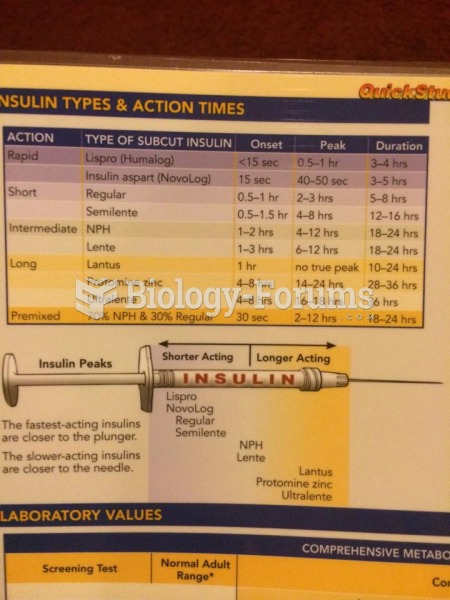|
|
|
Bacteria have flourished on the earth for over three billion years. They were the first life forms on the planet.
IgA antibodies protect body surfaces exposed to outside foreign substances. IgG antibodies are found in all body fluids. IgM antibodies are the first type of antibody made in response to an infection. IgE antibody levels are often high in people with allergies. IgD antibodies are found in tissues lining the abdomen and chest.
There are 60,000 miles of blood vessels in every adult human.
Vital signs (blood pressure, temperature, pulse rate, respiration rate) should be taken before any drug administration. Patients should be informed not to use tobacco or caffeine at least 30 minutes before their appointment.
Human kidneys will clean about 1 million gallons of blood in an average lifetime.







